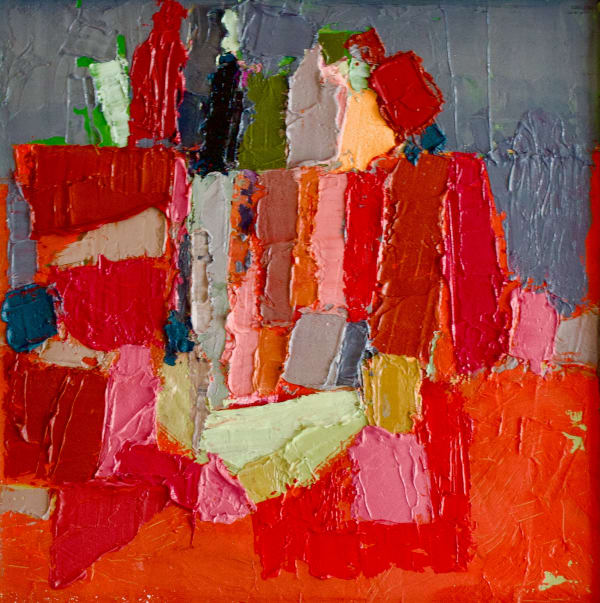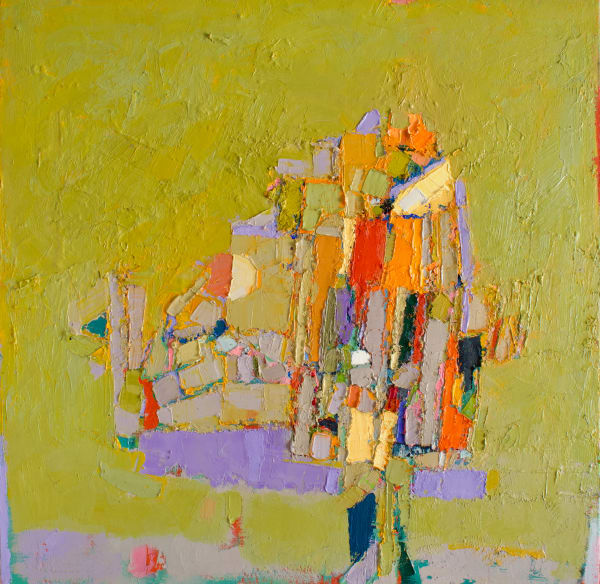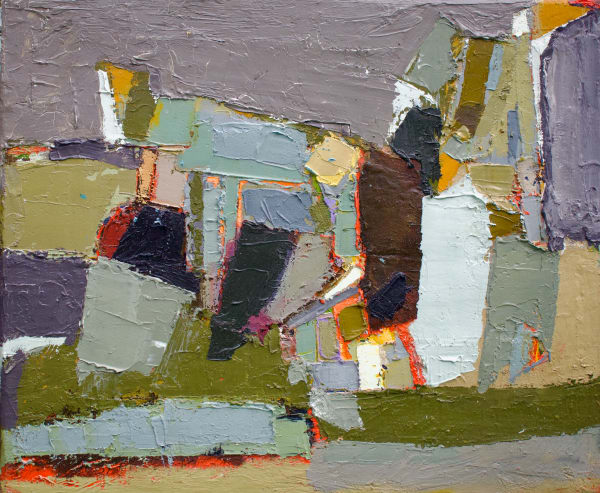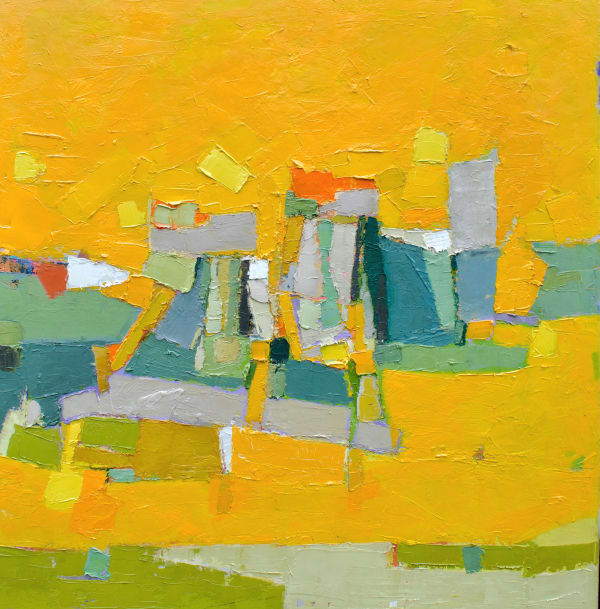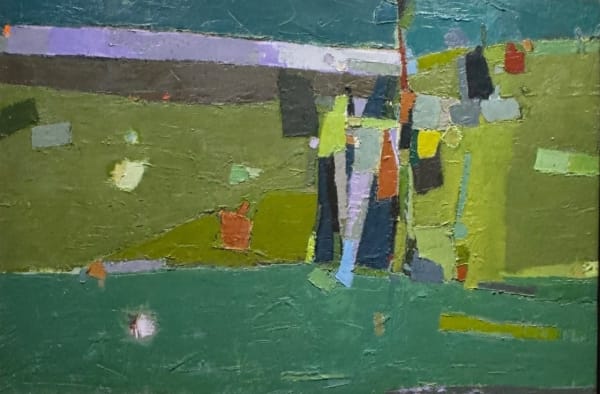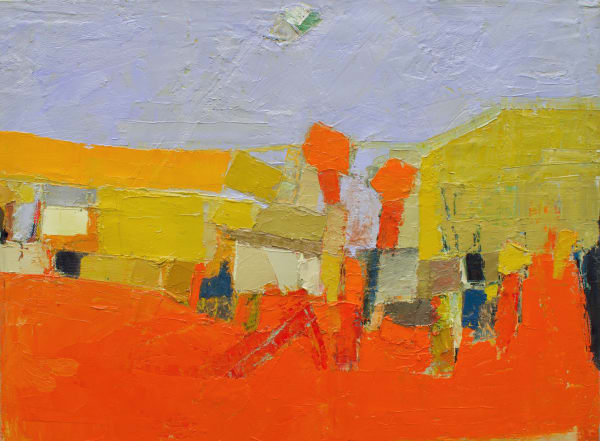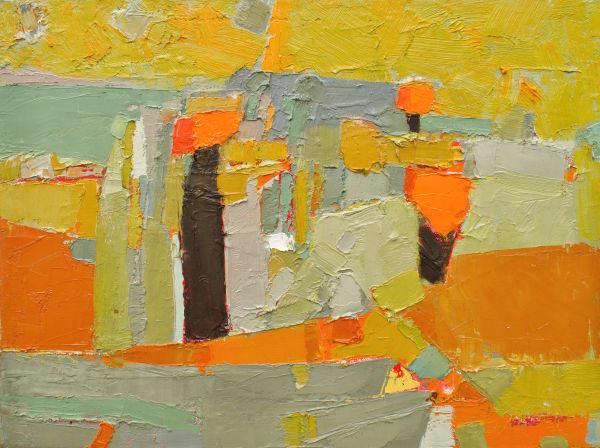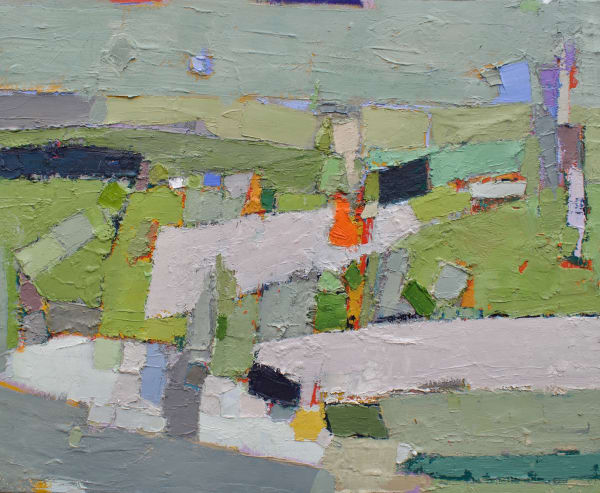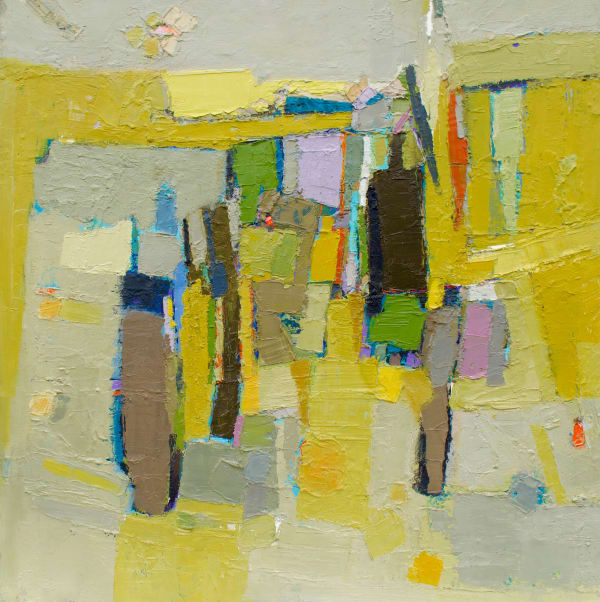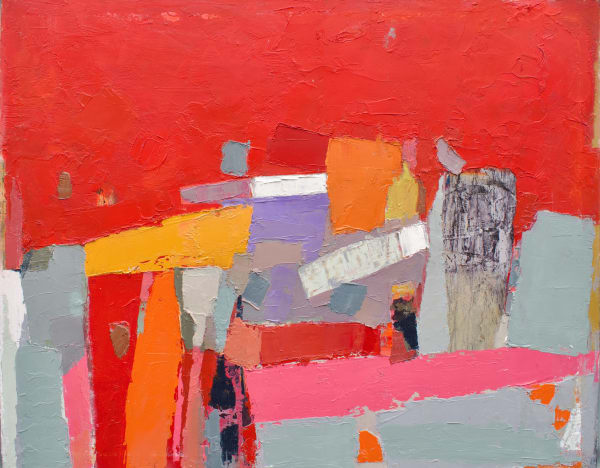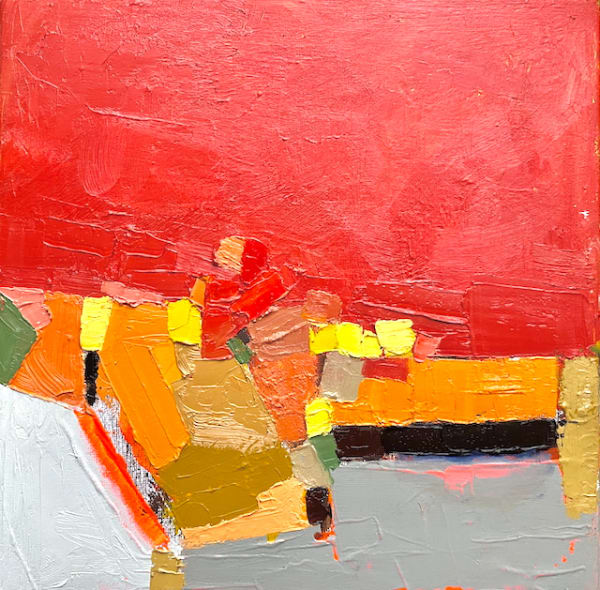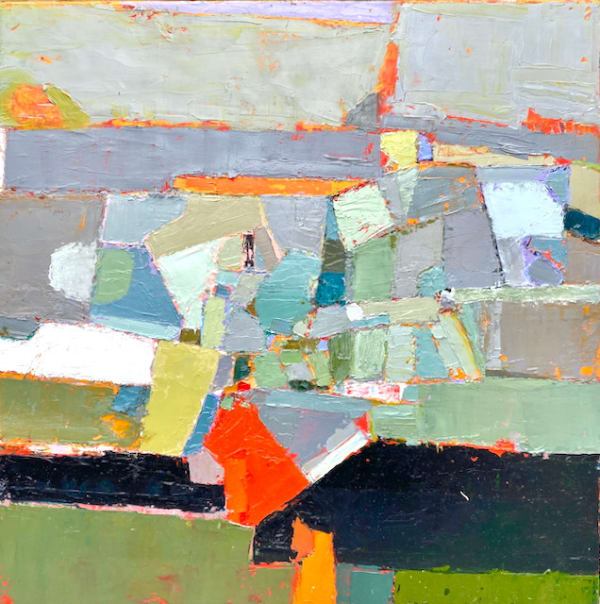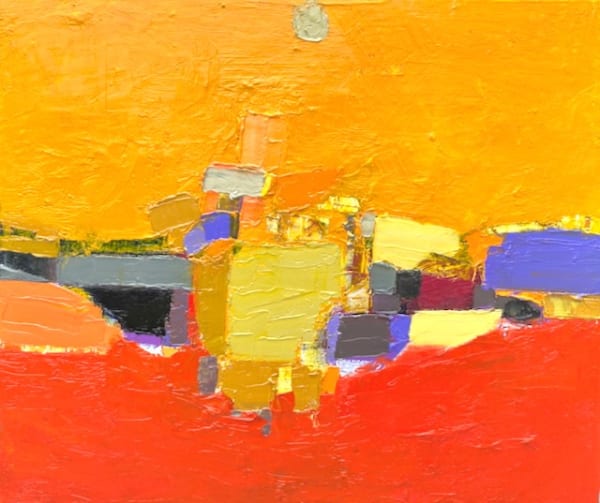Vanessa Cuthbert
‘I don’t paint to explain things. I paint to hold a moment — a glimpse of light, a shift in space, something half-remembered. If the viewer finds something of their own in it, that’s where the real connection happens.’ — Vanessa Cuthbert
Vanessa Cuthbert — Painting at the Edge of Memory and Light
There’s a distinctive clarity in the work of Vanessa Cuthbert — a clarity not of detail, but of intention. Her paintings hover somewhere between landscape and abstraction, grounded in experience yet unbound by literal representation. What they offer is not a description, but a distilled feeling — of a place, a walk, a time of day, a flicker of memory. They make space for the viewer to pause, to look, and to find their own way in.
Cuthbert retired early from her position as Senior Lecturer in Fine Art, having taught for many years at Manchester School of Art and Liverpool John Moores University. Her influence as an educator is widely felt, but it’s her own artistic practice — as a painter, printmaker and interdisciplinary artist — that continues to evolve with striking integrity.
She studied at the Royal College of Art, where she gained an MA with Distinction and was awarded the Darwin Scholarship, following a First-Class Honours degree from Liverpool School of Art & Design. In 2016, she was elected a Fellow of the Royal Society of Arts (FRSA). Her work has been exhibited extensively in the UK and abroad, including at the Royal Academy Summer Exhibition, the Royal Scottish Academy, and major contemporary art fairs and galleries.
Painting as Process, Painting as Place
At the centre of Vanessa Cuthbert’s practice is an instinctive connection to place — not in terms of map or location, but in the way colour, shape, light and space form impressions over time. Her creative process often begins with walking, noticing, sketching — recording rhythms and relationships between things. These field notes act as raw material. But back in the studio, the real work begins: simplifying, editing, layering, letting the painting evolve through addition and subtraction.
Her work resists being categorised. Some pieces lean into abstraction, others hold more to suggestion, but none are interested in neat categories. Colour is often the lead voice — soft blues, luminous ochres, bold yellows and shifting greys — but always in balance. Her compositions are carefully judged yet never overworked. There’s breathing room. You can feel when she steps back and lets the painting settle into itself.
Even the most abstracted works carry a sense of the real: a trace of landscape, an echo of structure, an atmosphere of light. These are not paintings that demand understanding — they offer presence, mood, and invitation. Each viewer brings something different, and each painting is generous enough to receive it.
What makes Cuthbert’s work compelling is its quiet assurance. There’s no posturing, no overstatement. Her paintings feel resolved without being closed; they carry energy without being restless. She is an artist confident in her instincts, committed to making work that is thoughtful, open, and alive. Collectors and curators value this. Her work sits comfortably in both private homes and public collections, not because it’s safe — but because it’s honest. It doesn’t pretend to be more than it is. And in that truthfulness — in the integrity of her colour, her space, her mark — lies its strength.
-

-

-

-

-
 Vanessa Cuthbert RCA FRSAb.1960Composition 070724 In Sun We ShineOil on canvas75 x 75cmSoldSold
Vanessa Cuthbert RCA FRSAb.1960Composition 070724 In Sun We ShineOil on canvas75 x 75cmSoldSold -

-

-

-

-

-

-

-

-

-

-

-

-

-

-

-

-

-

-


